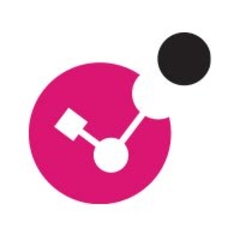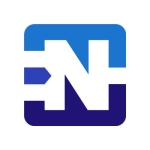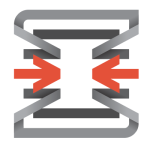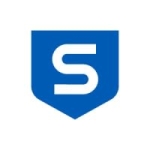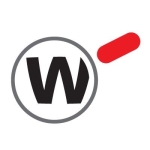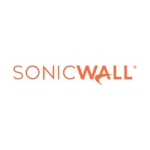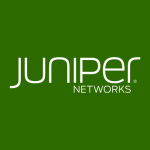What is our primary use case?
I work as an internal network team member. We protect the company environment from outside threats, outside viruses, and ransomware attacks. It is kind of an IT administrator job.
They are protecting internal security as well as giving us security from the outside world or public environment.
How has it helped my organization?
It protects the environment. It gives advanced features to our company, like Antivirus, more granular security policies, and more control over the traffic, e.g., what we want to allow or deny to our environment.
What is most valuable?
What I like about this firewall is it has a central management system. We can configure or monitor a number of firewalls at a time from the central management system.
They have a logging system where we can have our logs visible. The logs are easy to view and understand.
What needs improvement?
While the logs are very good and easy to understand, when you want to download these customized logs, they don't have as many features compared to competitive firewalls.
Check Point has a very good Antivirus feature. However, compared to the competition in the market, it is lacking somewhere. In my last organization, I worked with Palo Alto Networks as well. I found that while they both have an antivirus feature, the Palo Alto antivirus feature is much better. Check Point should improve this feature. It is a good feature, but compared to Palo Alto, it lacks.
For how long have I used the solution?
I have been using it for the last three years, since 2017.
What do I think about the stability of the solution?
Check Point is already a very big name in the market. Our software updates, even the Antivirus updates, are very stable in the market. There are no problems with its stability.
Performing maintenance for a solution takes around 12 people. Maintenance is something that our team is capable of. Internally, we have had many training sessions on Check Point Firewall. Our seniors have managed that for us so we are capable of doing it. Most of our BAU is done by us.
What do I think about the scalability of the solution?
Scalability is very easy. I haven't found anything that is the issue with the scalability of this firewall. If you have complete knowledge of it, the scalability is not tough.
How are customer service and technical support?
I used their assistance many times. The experience with them is sometimes very good. They give the best solution in a short amount of time. Two out of 10 times, I feel that they are only looking to close their tickets. They are keen to do that. My personal experience with the support is an eight out of 10.
Which solution did I use previously and why did I switch?
We currently use Check Point and Cisco ASA. The purpose for the company is to increase the security. They were only using Cisco ASA Firewall, which is kind of a degrading firewall right now because it lacks many features, which are advanced in Check Point Firewall. With Cisco ASA, we need to purchase additional IPS hardware. But, for Check Point, we do not require that. Also, if we want the same configuration for multiple firewalls at a time, then Cisco ASA does not support that. We have to create the same policy in each firewall.
How was the initial setup?
We have our own on-premises firewalls, not cloud-based. The production time took around nine to 12 months' time. The setup was completed during this time.
We follow the three-tier architecture for this firewall, which is also recommended by Check Point. We have the central management device as well as the web console and firewall.
What about the implementation team?
For the deployment process, there were only four senior network engineers involved from our company.
What was our ROI?
It is easy to control from the central management system. For example, if we have 10 firewalls, and we want to push that same configuration among them, we can use this solution's central management system to do that simultaneously. So, there is time saving in that way. The time savings does depend on the situation. For example, if I am running half an hour of work on each firewall, that will take around 300 minutes. However, if I do this work from the central management system, then it will only take 30 minutes to push the same configuration to those same 10 devices.
What's my experience with pricing, setup cost, and licensing?
They sell it in one box. In that one box, they sell Antivirus and Threat Prevention. They have everything, so we are not required to purchase additional IPS hardware for it.
The cost of the pricing and licensing are okay. They are giving me a good product as far as I know. It is more expensive than Cisco, but cheaper than Palo Alto, which is fine. It has many good features, so it deserves a good price as well.
Which other solutions did I evaluate?
I have experience with Palo Alto Networks Firewalls and Cisco ASA Firewall. Compared to these solutions, Check Point has a very good, understandable log viewer. It is easy to view and understand the logs, which helps a lot while doing troubleshooting or making new security policies for the organization. Also, it is very easy to create new security policy rules.
The Check Point Antivirus feature lacks in comparison to Palo Alto Networks. Also, compared to other competitive solutions, the training for Check Point available right now is very expensive as well as the certification is little expensive.
What other advice do I have?
Get properly trained. When I entered this organization, I struggled with this firewall. There are very few good quality training programs available in the market. Or, if it is available, then it is very expensive. So, I advise new people to get properly trained because it has many feature sets, and if they do not use them with the proper knowledge, then it could worsen their situation.
I am happy with the organization's progress, as they work hard on their product. It is a good lesson from a personal level: We should work hard and improve ourselves.
I would rate this solution as a nine out of 10.
Which deployment model are you using for this solution?
On-premises
Disclosure: PeerSpot contacted the reviewer to collect the review and to validate authenticity. The reviewer was referred by the vendor, but the review is not subject to editing or approval by the vendor.

